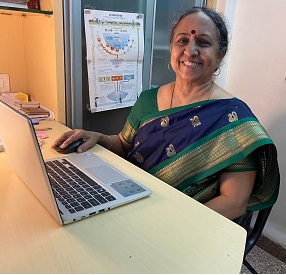My two recent posts – Literature searching and the ideal researcher, and Country wide access to databases / journals: an urgent need both brought in several comments and I thank every reader for these. We will be compiling the comments to see how we should move ahead.
I am also happy to add that since my last posts, I have learned of one important development – that AIIMS Delhi and PGI Chandigarh are the first academic libraries in India to subscribe to EMBASE! I learned this at an event I attended at AIIMS Delhi last month. In fact this institution’s library has access to a whole lot of resources that were not available to many for long.
About journals and articles access for the country, I wish to now touch a little more in-depth about the options we must explore.
Country wide access to “core journals” (those mandatory for PG courses) is really a starting point. The next level of journals (not mandatory, but still important) should definitely be subscribed by libraries, and many are available in several libraries.
But how do these are easily available to any health professional or student who needs them?
We had already discussed about the presence of Union Catalogs. There has to be a mandate to update them, both – by libraries and by the bodies that compile and maintain the databases. Libraries need to ensure that they regularly provide the most up-to-date status of their collection. The bodies that maintain the Union Catalogs, need to updating technology and search features.Only if both are done regularly, will end users have their benefits.
Another important element, is the “last mile” of availability. Knowing that a library has a journal that one needs is not enough. A user needs to know how he or she can get an article from that journal. Currently the NUCSSI (National Union Catalogue of Scientific Serials in India, – http://nucssi.niscair.res.in/ – provides an option to send an email to the library, but there is no way of knowing what happens with our email request. While technology could do lots more, the minimum that should be applicable is for a mandate for a library to respond to emails. One also notices that several libraries have their updates only till 2008 (this in 2018).
For availability, one important final step is for ensuring Fair Use under the Copyright law. Interlibrary sharing is almost always for academic use. While libraries do ask users to declare that they are making requests for academic uses and not for commercial, we need to go one step further. I have learned that in the USA, libraries have to make sure that they do not ask for more than five articles from one journal in a given year, under Fair Use, for users in their library. If they need more than five, then they either pay the copyright fee for the excess, or decide to subscribe to the journal.
We need to have such documentation in place for libraries. We also need to ensure that all requests are made from libraries and not from individuals. Private practitioners could be given library memberships to specific institutions nearest to them, and that institution could provide them with copies and also make requests to other libraries on their behalf. This is a suggestion, and the methods of implementation have to be made in consultation with librarians. Staffing to handle such requests may need a study.
PubMed offers an option to create Custom Filters, where any library can create one for itself. The library needs to upload its list of journal with years of availability. Once done, the library can create a filter by which its patrons know which items for their total search results are available in their own library. If all health sciences libraries created this filter, anyone who searches PubMed and is trained to find the right filters can easily know which library could have an article that he/she needs. The best part is that the only cost of doing all this for a library, is the time cost for the first time compilation of a list of journal holdings. We believe it may not be too much since most libraries do have such lists, there may only be formatting time. Every year, a library has to only revise the list by adding any new titles subscribed or changing a code for any journal it stops subscriptions to.
When there are so many methods by which our health professionals and researchers CAN get articles they need, isn’t it time to act on all these options?





